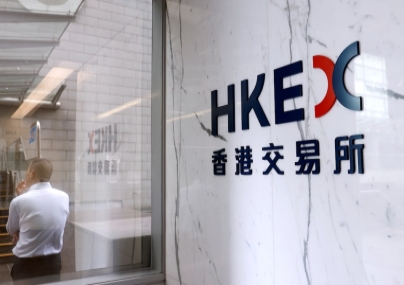
By Pete Sweeney
China's foreign investment mix is changing, with portfolio investors buying more stocks but foreign direct investment falling to a two-year low on a slowing economy, rising business costs and anti-monopoly probes and crackdowns on foreign firms.
Foreign direct investment (FDI) in China fell in over the first seven months of 2014 compared with a year earlier, while the offshore funds flowing into mainland stocks hit their highest mark in more than two years in July
A plateau in foreign investment could be a challenge for China, as it offers manufacturers an alternative source of capital to the banking system. Any shortfall is unlikely to be made up by portfolio flows, which favour more liquid stocks and are limited by quotas.
"Foreign capital coming here needs to get a lot more discriminatory," says Gary Reischel, founder of venture capital firm Qiming Venture Partners in Shanghai, referring to overall investment.
The stock market rose continuously for six weeks last month, its longest streak since March 2012, after being among the worst performers in the first half of the year.
Investors are drawn to Chinese shares by low valuations for large-cap shares after a four-year slump, a rallying yuan, and the prospect of a pilot project to allow foreigners to buy yuan-denominated stocks on mainland exchanges.
Back to topFDI falls
Non-financial foreign direct investment was $7.81 billion (4.72 billion pounds) in July, the lowest in two years, and fell an annual 0.4 percent in the first seven months of the year.
Chinese regulators have warned against reading too much into a single monthly FDI figure, and many economists agree.
Still, in the context of July data that included softness in manufacturing, lending, housing prices and fixed-asset investment, the numbers have prompted some debate.
The FDI slowdown was led by a sharp decline in investment from Japan, which plunged 45 percent in the first seven months of 2014; Europe, down 17.5 percent; and the United States, off 17.4 percent.
"There are other geographies in Asia that are definitely more attractive for manufacturing," says Matt Koon, consulting manager at Tractus Asia in Shanghai.
At the same time, there has been an increase in funds flowing into stocks via exchange-traded funds (ETF) in Hong Kong from foreign investors, who cannot yet invest directly in mainland equities.
ETFs under the Renminbi Qualified Foreign Institutional Investor (RQFII) scheme had net inflows of 8.2 billion yuan (785 million pounds) in July, the highest since December 2012 and nearly doubling from June, according to Morningstar data.
Launched in 2011, RQFII enables institutions to use offshore yuan to invest in the mainland's securities markets.
The net inflow in July was the equivalent to 14.5 percent of assets under management. A year earlier, there were outflows equivalent to 9.9 percent of assets under management.
Back to topHostile environment
FDI has risen each year since China joined the World Trade Organization in 2001, hitting a record $118 billion last year, with manufacturing a main destination.
But Beijing's plans to make the economy more reliant on domestic consumption could not only temper the inflows, but change the composition. Indeed, FDI in manufacturing fell in the first seven months of 2014 while it rose in services.
Many economists argue that China is losing attractiveness due to reasons such as persistently increasing costs for labour, relatively higher prices for energy, and expensive industrial property.
Coincidentally or not, the slowdown in FDI this year follows a campaign pillorying foreign firms for crimes including bribery, discriminatory pricing, monopolistic behaviour, and poor quality control – these have led to massive fines and detentions by police.
"The more aggressive stance of Chinese regulators is doubtlessly galling to foreign executives, but it is unlikely to eliminate their interest," Arthur Kroeber, economist at Dragonomics, wrote in a research note, adding some firms had made so much profit that they can "easily afford to pay the fine and go on its merry way minting money in the Middle Kingdom."
----------------------------------------------------------------------------------------------------------------------------
Back to topChina further loosens foreign ownership of hospitals
By Adam Jourdan and Koh Gui Qing

China will allow foreign investors to wholly own hospitals in seven cities and provinces, further opening up the country's fast-growing private hospital sector.
The cities of Beijing, Tianjin and Shanghai and the provinces of Jiangsu, Fujian, Guangdong and Hainan will take part in the pilot test that was launched in July, the Ministry of Commerce said in a statement.
The private healthcare sector is a magnet for investors with the number of private hospitals shooting up in the last decade as Beijing looks to take the pressure off its hard-hit state-run system.
"There is so much interest and a lot of money just waiting to have the opportunity to invest. It's not only a huge and growing market, but also the level of care is not that high, meaning there's a huge unmet need," says Simon Li, Shanghai-based managing director at Kantar Health.
China's healthcare spending is set to hit $1 trillion by 2020, according to McKinsey & Co, a major draw for hospital operators such as Singapore-based Raffles Medical Group Ltd, Malaysia's IHH Healthcare Bhd and U.S.-listed Chindex International Inc.
Beijing has been slowly opening the door to overseas money, previously allowing foreign investors to own 70 percent stakes in hospital joint ventures. Hong Kong and Macau, autonomous regions of China, and Taiwan all permit foreign investors to fully own hospitals.
Beijing has also made moves to allow doctors to work more freely in the private sector, part of a drive to enable overseas providers to take on a broader role. Currently, foreign players focus more on specialist areas such as maternity care.
"With more investment allowed by foreign players and greater freedom for doctors, this will enable foreign operators to get more into primary care and the mainstream market," says Li.
Back to topPrivatisation drive
The attraction is clear. There were 11,300 private hospitals in China last year, a massive rise from just 3,200 in 2005, according to a Deutsche Bank report in June. It added that a further 8,000 public hospitals were likely to be privatised over the next five to 10 years.
Approvals for foreign-owned hospitals will be overseen by provincial governments, the Ministry of Commerce said, adding that only investors from Macau, Taiwan and Hong Kong can practise traditional Chinese medicine (TCM).
The Ministry of Commerce announcement did not include any requirements for a minimum size of foreign investment.
Chinese hospitals suffer from a lack of funding and a steep gap between urban and rural care, often leading to high rates of bribery and simmering tension between patients and doctors.
Widespread graft has made it harder for China's poor to get access to healthcare, despite Beijing ordering hospitals to not turn away patients who need emergency treatment.
The move is also part of sweeping plans to reform the world's second-largest economy to give private and foreign investors greater access to enhance efficiency, technological know-how and coverage for basic services such as healthcare.
China had promised earlier this year to relax limits on foreign investment in hospitals on the mainland in a healthcare reform plan for 2014. In May, the government also eased restrictions on foreign investment in joint venture hospitals.
Back to top




